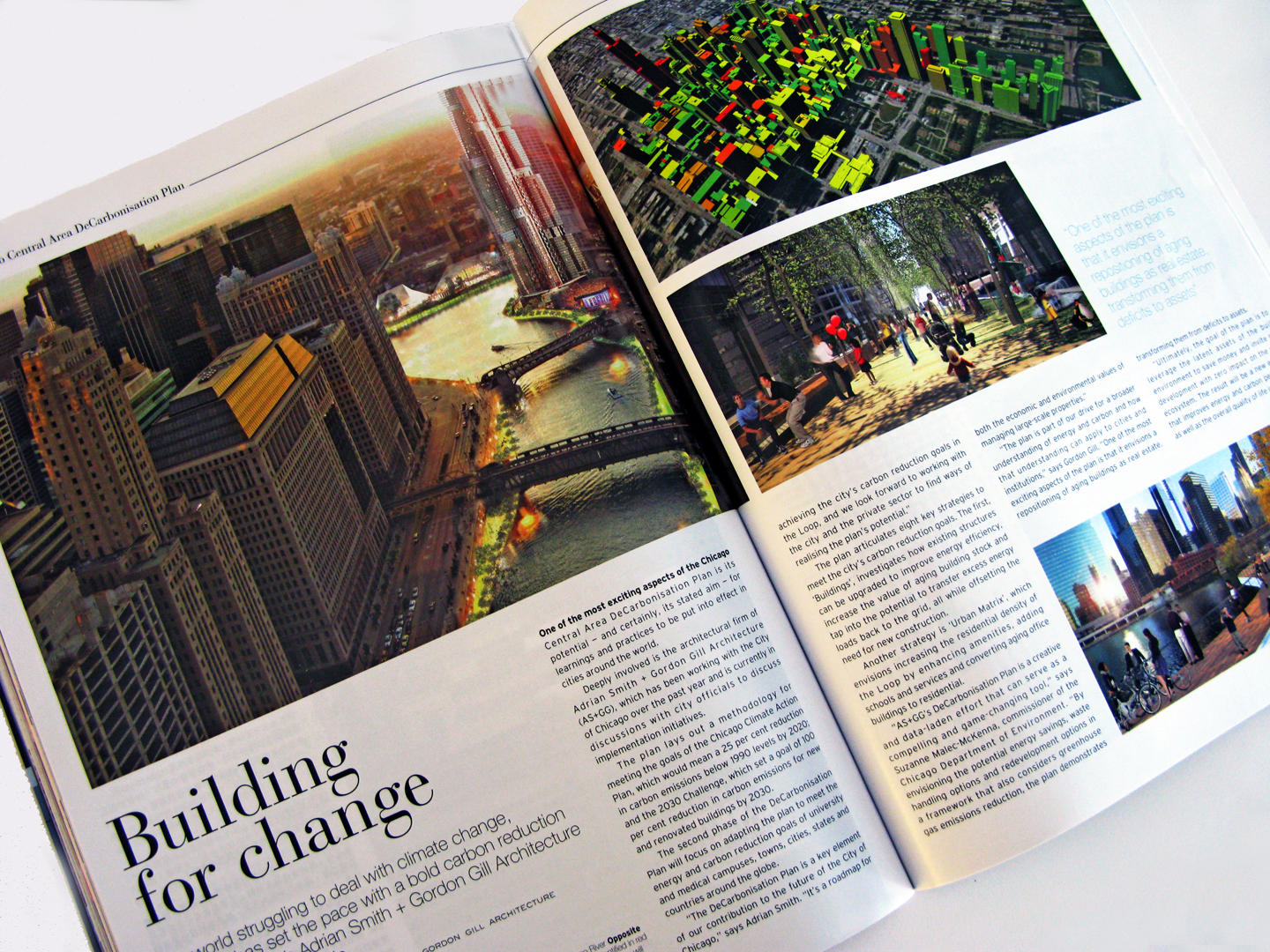apr 10 | Perspective
Building for change
In a world struggling to deal with climate change, Chicago has set the pace with a bold carbon reduction plan - in which Adrian Smith + Gordon Gill Architecture is playing a critical role.
One of the most exciting aspects of the Chicago Central Area DeCarbonization Plan is its potential - and certainly, it's stated aim - for learnings and practices to be put into effect in cities around the world.
Deeply involved is the architectural firm of Adrian Smith + Gordon Gill Architecture (AS+GG), which has been working with the City of Chicago over the past year and is currently in discussions with city officials to discuss implementation initiatives.
The plan lays out the methodology for meeting the goals of the Chicago Climate Action Plan, Which would mean a 25 percent reduction in carbon emissions below 1990 levels by 2020; and the 2030 Challenge, which set a goal of 100 percent reduction in carbon emissions for new and renovated buildings by 2030.
The second phase of the DeCarbonization Plan will focus on adapting the plan to meet the energy and carbon reduction goals of university and medical campuses, towns, cities, states and countries around the globe.
"The DeCarbonization Plan is a key element of our contribution to the future of the City of Chicago," says Adrian Smith. "It's a roadmap for achieving the city's carbon reduction goals in the Loop and we look forward to working with the city and the private sector to find ways of realizing the plan's potential."
The plan articulates eight key strategies to meet the city's carbon reduction goals. The first, "Buildings," investigates how existing structures can be upgraded to improve energy efficiency, increase the value of aging building stock and tap into the potential to transfer excess energy loads back to the grid, all while offsetting the need for new construction.
Another strategy is "Urban Matrix," which envisions increasing the residential density of the Loop by enhancing amenities, adding schools and services and converting aging office buildings to residential.
"AS+GG's DeCarbonization Plan is a creative and data-laden effort that can serve as a compelling and game-changing tool, says Suzanne Malex-McKenna, commissioner of the Chicago Department of Environment. "By envisioning the potential energy savings, waste handling options and redevelopment options in a framework that also considers greenhouse gas emissions reduction, the plan demonstrated both the economic and environmental values of managing large scale properties."
"The plan is part of our drive for a broader understanding of energy and carbon and how that understanding can apply to cities and institutions," says Gordon Gill. "One of the most exciting aspects of the plan is that it envisions a repositioning of aging buildings as real estate, transforming them from deficits to assets.
"Ultimately, the goal of the plan is to leverage the latent assets of the built environment to save money and invite new development with zero impact on the urban ecosystem. The result will be a new economy that improves energy and carbon performance as well as the overall quality of life in the Loop."
Among the DeCarbonization Plan's concepts and proposals:
- Creating a green corridor and below-grade inter-modal axis on Monroe Street that would offer a place of respite for residents, commuters and visitors
- Repurposing the Loop's underground tunnels as a pneumatic waste disposal system
- Extending the existing Chicago riverwalk and bicycle paths to increase mobility within and across the Loop
- Publishing The Green City, a textbook that would enter the public and private school curricula as a primer on urban design and decarbonization for public school students
The DeCarbonization Plan also includes an analysis of the funding resources available to help developers and existing building owner's defray the cost of green retrofits and other sustainable measures. Research for the DeCarbonization Plan has also acted as a catalyst for the creation of a parametric model, still under development, which will be used to calculate the carbon savings achieved by various changes to the urban environment.
The Chicago Central Area DeCarbonization Plan grew out of AS+GG's work on an ongoi8ng greening and modernization project at Chicago's Wills Tower, formerly Sears Tower. AS+GG's earliest discussions of the plan were with Sadhu Johnston, then Chicago's chief environmental officer.
"Cities around the world are working to reduce energy and greenhouse gas emissions within existing urban areas," said Johnston, now deputy city manager in Vancouver. "Through their work on Willis Tower, AS+GG and the Willis owners have demonstrated that there are cost effective strategies to reduce greenhouse gasses.
"Building on this work, AS+GG has created a DeCarbonization Plan for an urban core, which really will be a model for cities around the world."
In addition, AS+GG have launched an affiliated energy services, engineering and consulting firm PostivEnergy Practice. Headed by Roger E. Frechette III as founding president, PostivEnergy Practice will conceive, design, implement and manage energy performance, resource management and carbon reduction strategies.
